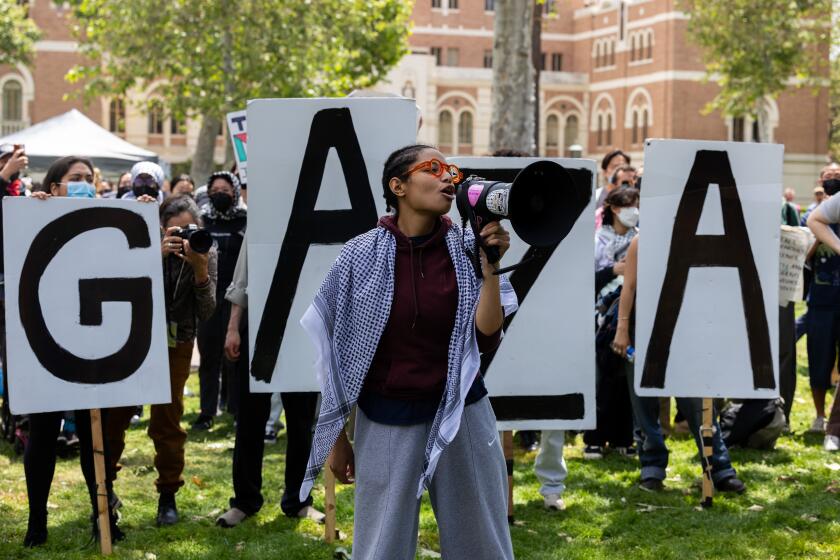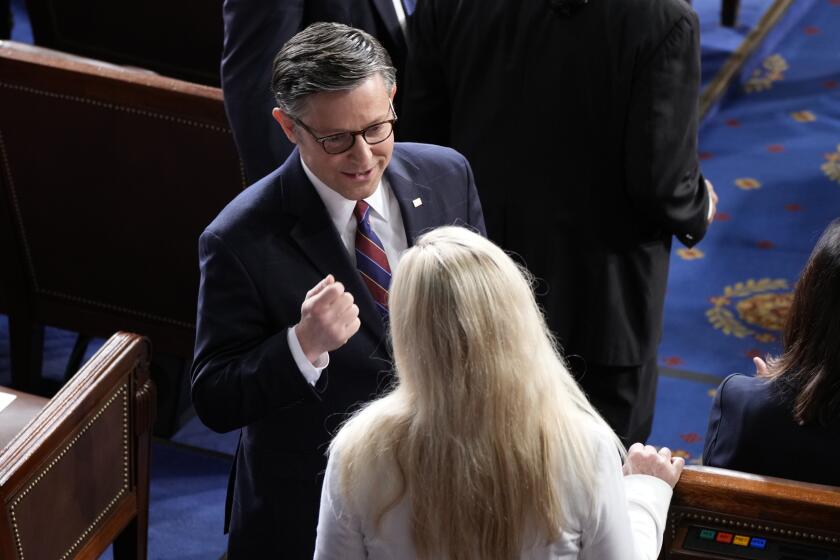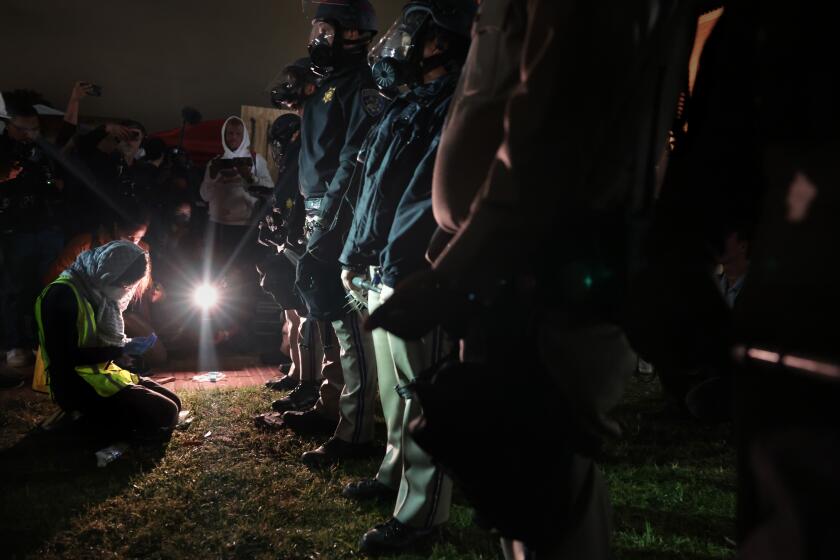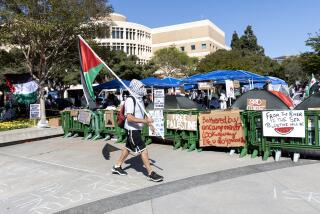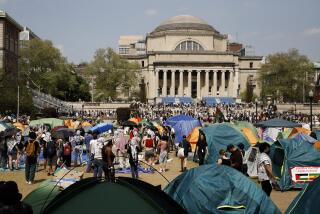Column: What we keep getting wrong about protests like those at USC, Columbia and other campuses
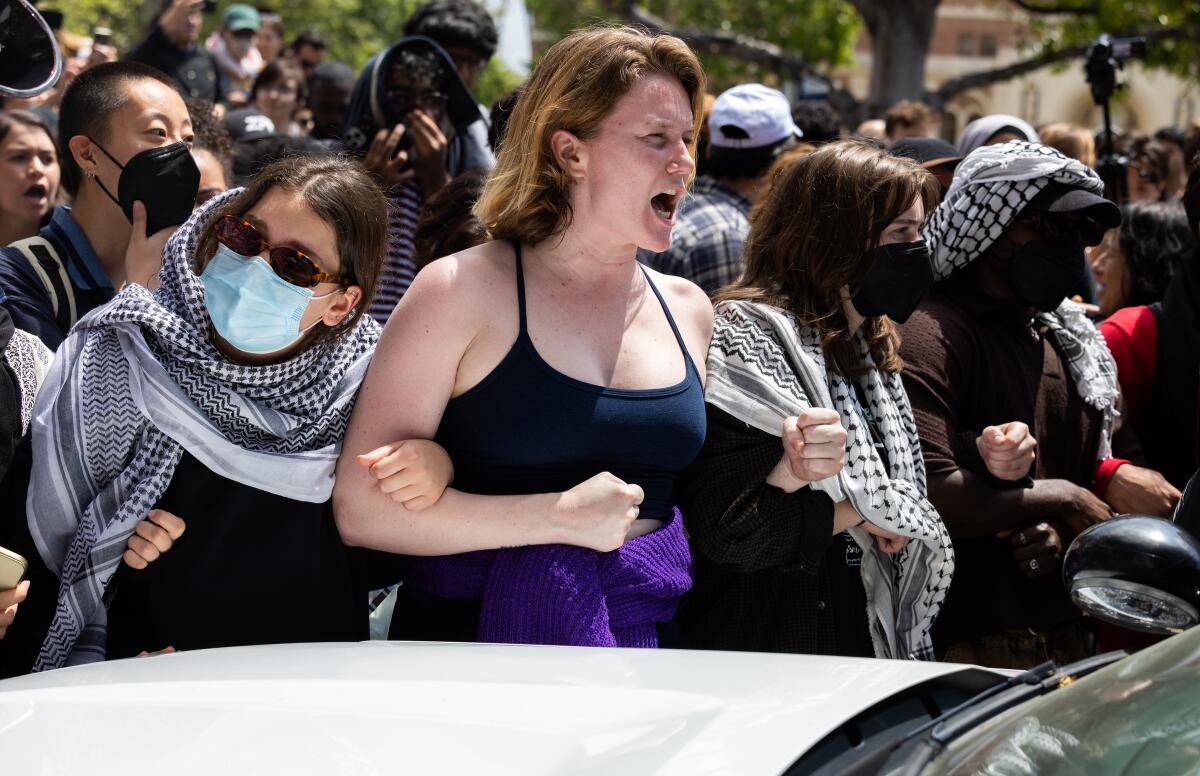
The current campus demonstrations are a reminder that of all the mossy clichĂŠs and puffed-up pieties of polite (and impolite) American discourse, the sanctity of protest is the hardest to question.
Doubting the loftiness of protest invites elite scorn more than any other skepticism about a constitutional right. Proposing limits on free speech, for example, attracts far less outrage. Indeed, people question free speech all the time: in debates about âhate speech,â campaign finance, social media and more. (Letâs not even get into the fashionableness of questioning 2nd Amendment rights).
But if I say that most protests are performative cosplay, or mass meet-ups of the angry, the radical, the lonely or the misinformed, someone is bound to point to the civil rights protests of the 1960s or the campaign for womenâs suffrage, followed by a string of righteous how-dare-yous.
Thereâs a surreal disconnect between the demonstrations and the threats cited by USC to arrests and threats of suspension or explusion at USC.
This gets to part of my objection. Thereâs nothing inherently good or bad about protesting. Organized protest is a form of speech, and, like speech, it is rightly protected by the 1st Amendment. But, also like speech, its morality â though not its legality â is wholly dependent on the content.
You have a right to say, or protest for, awful things. Invoking that right doesnât make your view any nobler.
The Jim Crow-era civil rights protests were noble because the cause was noble. They did not prove that protesting is always good, merely that it can be. Replace the March on Washington with the Nazi march on Skokie, Ill., and you get the point.
In a significant blow to the Marjorie Taylor Greene fringe, Speaker Mike Johnson got aid to Ukraine and Israel through the House and might yet keep his job.
The aesthetics and psychology of protest are often ugly because crowds encourage extremism and intimidation. Well-intentioned protest organizers know this better than anybody; they often struggle to keep the crowds from becoming dangerous mobs. The core message of mass protest is âstrength in numbers,â a primordial feeling that can often lead to a kind of illiberal power-drunkenness. âThe hallucinations of alcoholics provide us with an opportunity to study crowds as they appear in the minds of individuals,â Elias Canetti writes in his brilliant book âCrowds and Power.â
Some argue that democracy is all about strength in numbers, and thatâs partly true. But democratic will is exercised by the private actions of individual voters casting secret ballots. The strength in numbers invoked by most large protests is better understood as populism, and populism has an uglier history than democracy, from the long history of race riots to Jan. 6.
The irreducible political unit in America is the individual, not the crowd. The highest form of protest (and speech) is captured by Norman Rockwellâs famous painting of a lone, working-class dissenter standing up for his conscience as his neighbors listen politely, not by images of mobs shouting insults, blocking traffic, occupying buildings or worse.
As pro-Palestinian protests grow at California colleges and universities, counterprotesters spark clashes at UCLA.
Again, not all protests are ugly riots or mass tantrums. But the tolerance often shown for both is a product of romantic impulses driven by â60s nostalgia. As a generation, progressive baby boomers take a back seat to nobody in their stunning self-regard and overestimation of their historical importance. But these people have shaped the narratives of academia, entertainment and journalism. Theyâve convinced themselves, and the young minds they shape, that protest is self-justifying, a rite of passage of enlightened youth.
Elite universities, run by acolytes of this cult, struggle to deal with protests because they believe, as a matter of educational philosophy, that giving voice to authentic passion is the route to self-actualization. As one headline conveniently summarized, âStudent Protest Is an Essential Part of Education.â Who says? People who love student protest, duh.
I could have salted this column with examples of todayâs protesters revealing how precious little they know about the issues supposedly motivating them â or of fawning coverage of mobs openly siding with terrorists. But my point isnât about these protests in particular. Itâs about the broader cult of protest.
The nostalgic champions of the campus protests of the â60s would have Americans believe they were a heroic success, stopping the Vietnam War. But what they actually helped achieve was Richard Nixonâs election and seven more years of war.
Performative protest feels good for those drunk on their own, unearned sense of importance. But such spectacles are often terrible for their intended ends. Thatâs one more reason not to glorify protest for its own sake.
More to Read
A cure for the common opinion
Get thought-provoking perspectives with our weekly newsletter.
You may occasionally receive promotional content from the Los Angeles Times.
